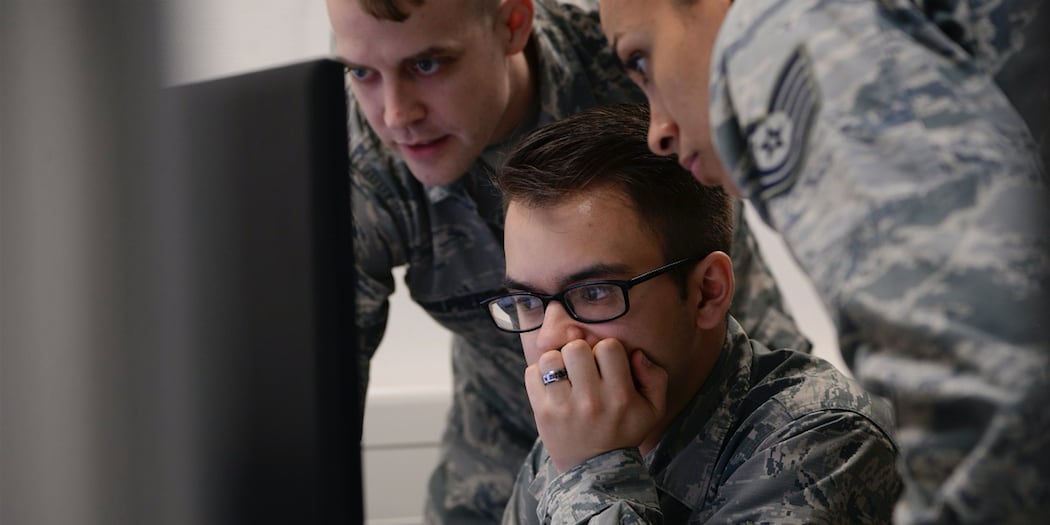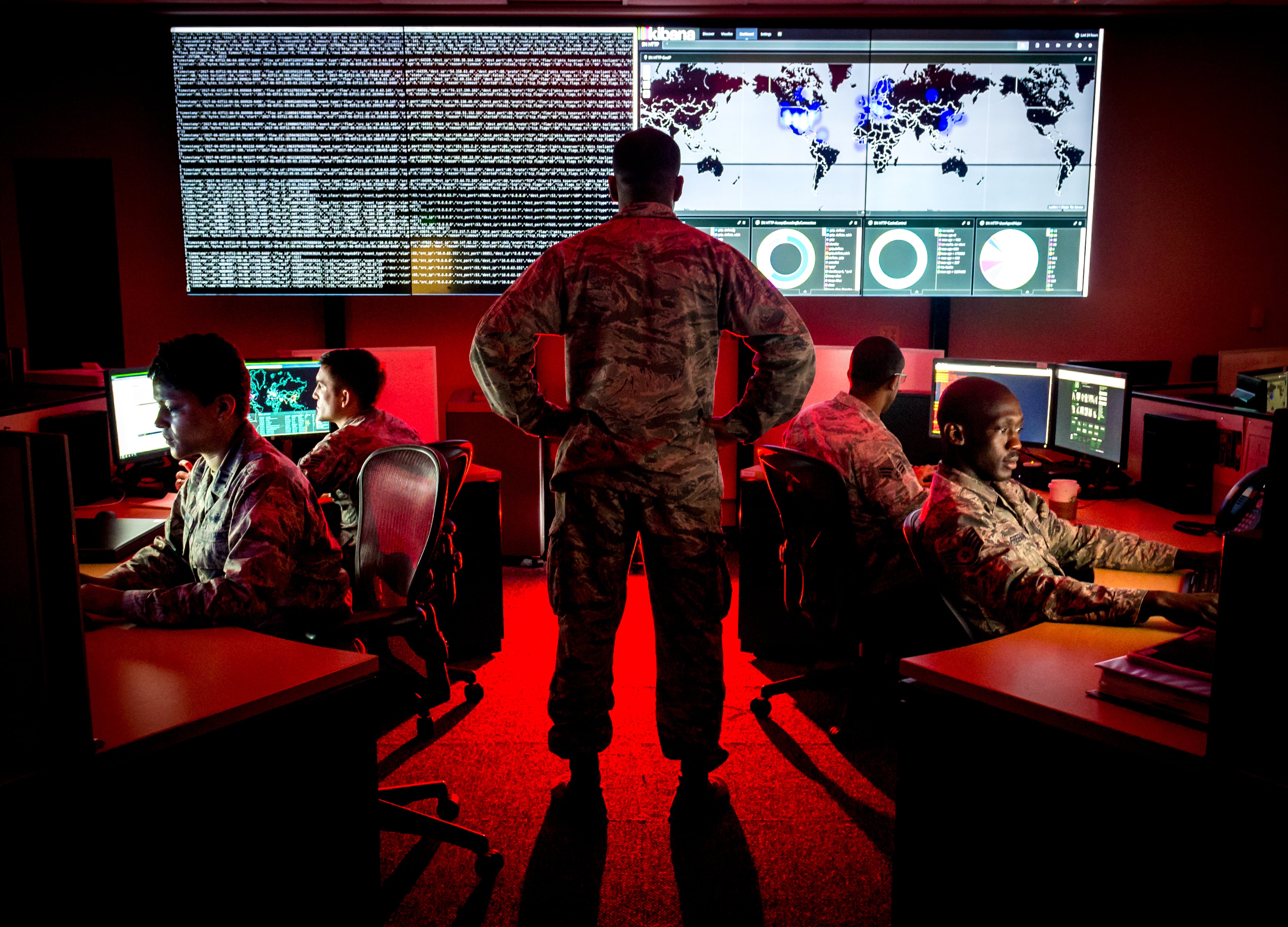The Air Force is overhauling its cyber enterprise.
The service announced Sept. 18 a new information warfare focused organization called 16th Air Force that combines cyber, intelligence, surveillance and reconnaissance, electronic warfare and information operations.
The Air Force also recently rebranded its main communications arm essentially separating traditional IT functions from cyber warfare under the deputy chief of staff for ISR.
And on Sept. 13, the acting secretary of the Air Force signed the service’s cyber warfare flight plan, which officials say will serve as a blueprint for the next 10 years in the cyber domain.
Lt. Gen. VeraLinn Jamieson, the deputy chief of staff for intelligence, surveillance, reconnaissance and cyber effects operations, said at the annual Air, Space, Cyber conference Sept. 18, that the new plan will help guide funding, resourcing, training and capabilities for Air Force cyber offices.
“We have to make sure that highway is there when we need it and we defend it from adversary activity. Then we have to be able to project power in and through cyber and to increase the survivability and lethality of our warfighting capabilities and our operators,” said Brig. Gen. Bradley Pyburn, the director of cyberspace operations and warfighter communications in the office of the deputy chief of staff for intelligence, surveillance, reconnaissance and cyber effects operations. “Finally, being able to communicate in contested and degraded environments. That’s what we’re trying to achieve with the flight plan.”
While the service had previously previewed the document prior to its official publication, Jamieson provided additional details of the plan. The document itself is classified, but the Air Force passed out an unclassified version that fit on a single tri-fold pamphlet.
The strategy lays out seven areas the service wants to pursue, including:
- Human capital, meaning the Air Force has to be able to recruit, retain and develop talent in the cyber domain
- Offensive cyber operations
- Defensive cyber operations
- War fighter communications, which includes building a global and resilient command and control grid
- Emerging technology
- ISR for and from cyber operations
- Partnerships
For offensive cyber, while the Air Force doesn’t own any offensive cyber capability – rather they provide their offensive teams to U.S. Cyber Command to employ – the pamphlet noted that the service needs to expand offensive cyber operations capabilities, develop an offensive-focused workforce and integrate with partners. The Army and Marine Corps, for example, are creating organic offensive cyber capabilities.
On the defensive operations side, the service is creating new mission defense teams that will defend critical cyber terrain relevant to Air Force missions. These teams are separate from the Cyber Command elements and have been carved out from the communications squadrons that performed IT functions.
On the intelligence front, Pyburn said intelligence should inform cyber and vice versa.
“How do we get intelligence from cyber that informs multidomain operations and then how do we generate intelligence that when it informs cyberspace operations as we look to adversary capabilities,” he explained.
Pyburn also lumped emerging technology and partnerships together describing them as very critical and underpinning a lot of the strategy.
“The technology we have today is not going to be the technology we have next week or next month or tomorrow. We have to be agile, we have to be quick,” he said. “Finally it’s partnerships. When I say partnerships, don’t just think interagency, don’t just think academia and industry … but there’s also partnerships even within the Air Force that we have to foster and develop and grow to deliver these capabilities.”
Policy versus operations
The Air Force created the new deputy chief of staff for ISR and cyber effects position in 2018 as a way to offload the IT and mundane network operations tasks from the warfighting entities.
RELATED

Jamieson, who retires Nov. 7 and will be replaced by Maj. Gen. Mary O’Brien, told reporters that the Air Force took lessons from the other services to rethink those positions
“Why did we do that? Because the Navy said … ‘oh my gosh, if you have to do warfighting and CIO and IT you will get stuck in IT,’” she said. “We took their lessons learned and we cut that out. We have rebranded the 6 [communications directorate] to be warfighting, cyber warfare and that is cyber effects operations and warfighting comms. That’s it."
The Army and the Navy suggested doing something new, Jamieson said, because they both did it the same way and it didn’t work. “So we’re trying something new,” she said.
More specifically, what Jamieson focuses on is the workforce, concepts, training, necessary platforms and tools required and integrating them all so the new 16th Air Force at the operational level has guidance to execute. Rolling it all that up would be too much for one person, she said.
The 16th Air Force command has “got enough on his plate executing ISR, cyber warfare, electronic warfare and information operations,” she said. “He’s going to execute. He is the lead force presenter for the combatant commands. He’s got a lot of no kidding operational warfighting on his plate. The last thing you want him doing is fighting the battles of policy.”
Mark Pomerleau is a reporter for C4ISRNET, covering information warfare and cyberspace.








